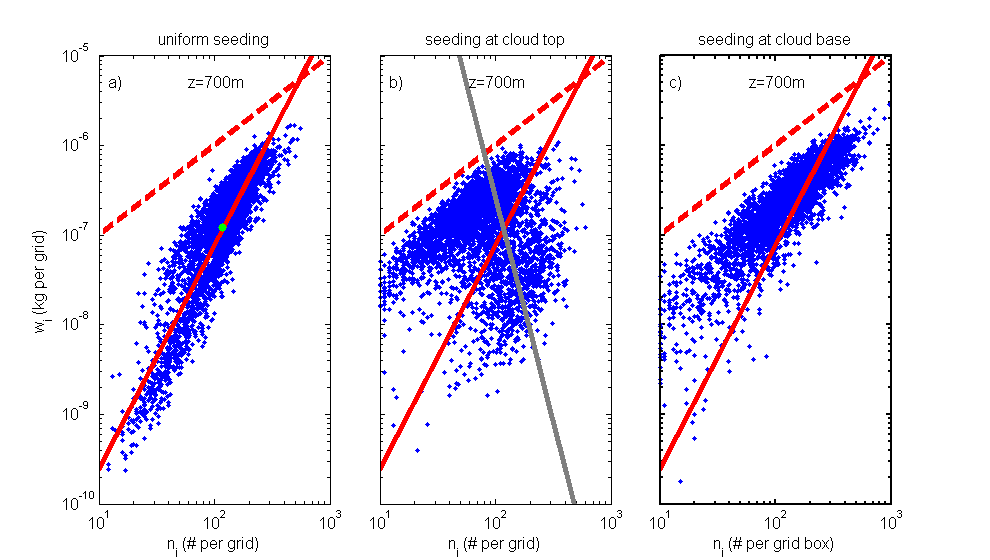Location Matters: Origin of Ice Formation Influences Mixed-phase Stratiform Clouds
Submitter:
Shaw, Raymond A — Michigan Technological University
Area of research:
Cloud Processes
Journal Reference:
Science
Mixed-phase stratiform clouds are common features in the Arctic and midlatitude atmosphere. These thin clouds contain a mix of ice crystals and "supercooled" water droplets that, despite the freezing temperatures, remain in liquid form. Scientists aren't sure why these clouds can persist for long periods of time, even while steadily losing ice particles through precipitation. Whether they dwindle or persist has implications for how energy is transferred between the surface and the upper atmosphere.
Part of the mystery of persistent, precipitating mixed-phase clouds is the apparent steady source of ice crystals. It is thought that every ice crystal formed in the cloud requires the presence of one catalyst particle, called an ice nucleus, which could be dust, volcanic ash, black carbon, or other substances. Do these particles originate at the surface, entering through the base of the cloud, or in the free-troposphere, entering through the top of the cloud? Or perhaps the ice crystals form on particles that are distributed throughout the entire volume of the cloud? It turns out that the answer to this question directly influences the way ice is distributed within the mixed-phase cloud.
Impact
A simplified theoretical description has been developed for predicting the ice water content and the ice number concentration in mixed-phase stratiform clouds. The theory, includes the growth of ice crystals by vapor deposition and their sedimentation, along with a steady source of ice nucleation. When the ice nucleation is assumed to be distributed throughout the cloud volume the theory predicts a power law relation between ice-water content and ice-number concentration with exponent 2.5 (see figure). By contrast, a cloud that is diluted and mixes would have a linear relationship (power law with exponent 1). The theory shows that if ice crystals originate at cloud top, the power law has an exponent of -5. The result is independent of assumptions about the vertical velocity structure of the cloud and is therefore more general than the related expression derived previously by the authors (Yang et al. 2013).
The sensitivity of the ice mass—ice number relationship to the spatial distribution of ice nucleation is confirmed by tracking large numbers of individual ice crystals within a detailed simulation of a turbulent, mixed-phase cloud. The large-eddy simulation is based on conditions observed in the Arctic during the Indirect and Semi-Direct Aerosol Campaign (ISDAC). Lagrangian tracking of growing, sedimenting ice crystals is performed with cloud volume, cloud top, and cloud base sources of ice particles through a time-dependent cloud field.
Summary
In prior work (Yang et al. 2013), evidence for the 2.5 slope from ISDAC clouds was shown. The new theoretical prediction for the 2.5 power law allows the ice crystal formation rate to be estimated directly from measurements of ice mass and ice number. Based on the ISDAC measurements, a lower bound of 0.006 m-3 s-1 is obtained. It is shown how an instrument lower-size cutoff can influence the interpretation of the data, highlighting the need for improved measurements and a more thorough data analysis. This work demonstrates that more detailed simulations, along with analysis of aircraft and remotely measured ice crystal number and mass data, can provide important clues about the formation of ice crystals in mixed-phase stratiform clouds.


